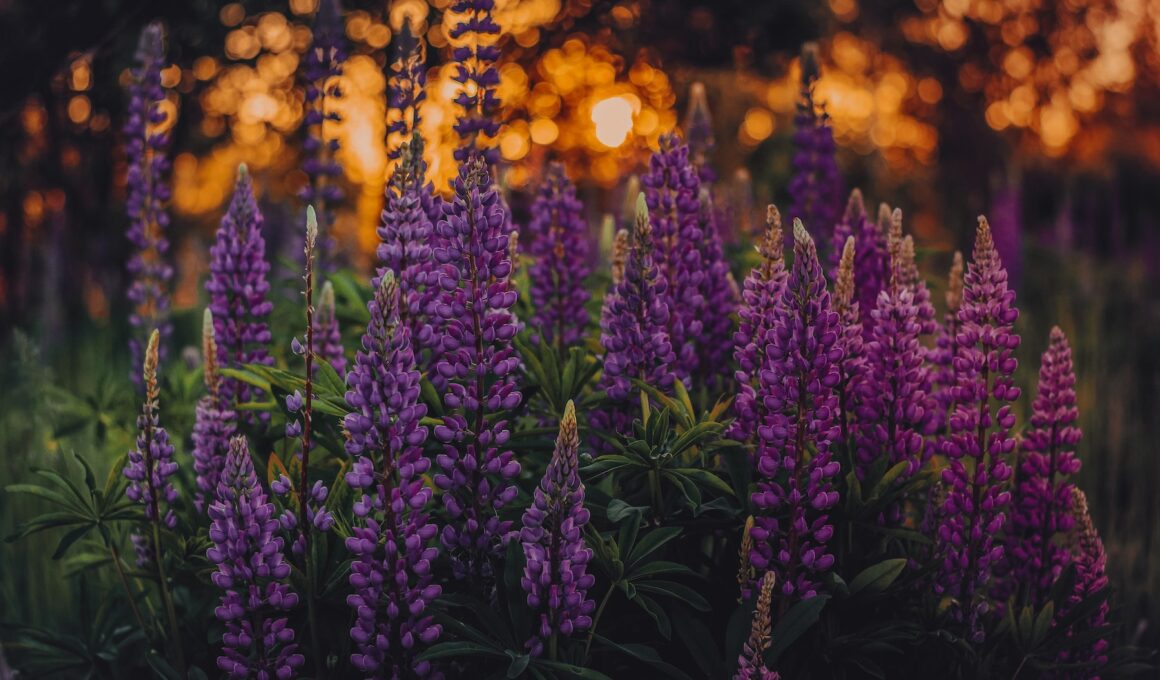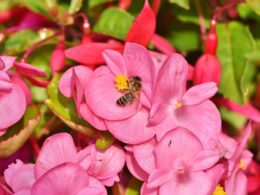Are you wondering whether you should cut the seed heads off your lupins? It’s a common question among gardeners, and the answer depends on your goals and preferences. Lupins are beautiful and easy-to-grow plants that can add a pop of color to your garden. However, they also produce seed heads that can affect the plant’s growth and appearance.
In this article, we’ll explore the benefits and drawbacks of leaving lupin seed heads on, as well as the advantages and disadvantages of cutting them off. By the end, you’ll have a better understanding of what to consider when deciding whether to prune your lupins.
First, let’s look at the benefits of leaving lupin seed heads on. They can provide a source of food for birds and wildlife, and they can also add a decorative element to your garden. Additionally, leaving seed heads on can help the plant self-seed and produce more flowers in the following years.
However, there are also some drawbacks to consider, such as the fact that seed heads can weigh down the plant and affect its overall shape. They can also take up space and limit the growth of other nearby plants. Ultimately, whether or not to leave seed heads on will depend on your priorities and preferences, as well as the specific needs of your garden.
Benefits of Leaving Lupin Seed Heads On
Leaving the fluffy tufts on top of the lupins not only adds a touch of whimsy to your garden, but also provides a food source for birds. Lupin seed heads are a vital ecological component, as they play a significant role in pollination.
The flowers attract bees, butterflies, and hummingbirds, which in turn, pollinate other plants in your garden. The benefits of pollination cannot be overstated. Without it, plant species wouldn’t be able to reproduce, leading to a decline in biodiversity.
By leaving the seed heads on your lupins, you’re helping to create a healthy ecosystem in your garden. Plus, watching the birds flit around your garden, feeding on the seed heads, is a delightful sight that adds to the natural beauty of your outdoor space.
The ecological role of lupin seed heads extends beyond pollination. Once the flowers have been pollinated, the seed heads become an important food source for birds. Leaving them on your lupins allows them to access this easy source of nutrition, helping them to thrive in your garden.
So, next time you’re tempted to cut off the seed heads, remember the benefits they provide to your garden’s ecosystem and the delight they bring to the birds that visit.
Drawbacks of Leaving Lupin Seed Heads On
Keeping the spent blooms on the lupins will result in a messy and chaotic garden bed. Here are some harmful effects of leaving the lupin seed heads on:
-
The spent blooms will attract pests such as aphids, spider mites, or even rodents that will cause further damage to your garden bed.
-
The seed heads may contain diseases or fungus that could infect other plants in your garden bed, leading to ecological consequences.
-
The lupin seed heads could also take up valuable space and nutrients in your garden bed, blocking the growth of other plants.
To avoid these drawbacks, it’s best to cut the seed heads off the lupins. By doing so, you’ll help your garden bed stay healthy and organized. You can also use the seed heads for crafting or to add to your compost pile.
By taking care of your lupins, you’re also taking care of your entire garden bed. So don’t hesitate to cut off those spent blooms and enjoy a beautiful and thriving garden.
Is the Timing for Cutting Back Cosmos Similar to Cutting Off Seed Heads of Lupins?
Timing is crucial when it comes to cutting back cosmos plants. Just like cutting off seed heads of lupins, knowing when to trim your cosmos can help promote future growth and vibrant blooms. Whether it’s early spring or late fall, proper pruning ensures healthier plants and stunning displays of flowers.
Benefits of Cutting Lupin Seed Heads Off
By removing the spent blooms of your lupins, you can create a healthier and more visually appealing garden space. Cutting off the seed heads will not only prevent them from falling to the ground and spreading throughout the garden, but it will also encourage the plant to produce more blooms.
Leaving the seed heads on can divert the plant’s energy towards producing seeds instead of new growth. Seed dispersal is a natural process that occurs in most plants, including lupins. However, allowing the seeds to disperse freely can lead to a crowded garden and unwanted growth.
Cutting off the seed heads will prevent this from happening and give the plant more space to flourish. Additionally, lupins have a tendency to self-seed, which can lead to an overabundance of plants in the following year. By removing the seed heads, you can prevent this from happening and maintain a more balanced garden.
Removing the spent blooms from your lupins can also promote plant growth. When the plant is not putting energy towards producing seeds, it can focus on developing its root system and producing more foliage. This can lead to a healthier and more robust plant. So, if you want your lupins to thrive and produce more blooms, don’t hesitate to cut off those seed heads!
Drawbacks of Cutting Lupin Seed Heads Off
If you cut off the seed heads of lupins, you might be inadvertently contributing to the loss of a food source for local wildlife.
Additionally, cutting off the seed heads may also result in decreased visual interest in your garden or the surrounding area.
Lastly, it’s important to consider the impact that cutting off the seed heads can have on the local ecosystem as a whole.
Loss of Wildlife Food Source
You’ll be depriving the local wildlife of a valuable food source if you remove the lupin seed heads. Lupins are popular among bees and other pollinators, and cutting off the seed heads can significantly reduce the amount of nectar and pollen available to them.
Additionally, birds rely on lupin seeds as a food source during the winter months, and removing the seed heads can disrupt their feeding habits and cause them to migrate elsewhere in search of food. So, before you reach for those garden shears, consider leaving the lupin seed heads intact.
By doing so, you’ll be helping to promote wildlife conservation and habitat preservation in your local area. Plus, watching bees and birds flock to your garden for a tasty snack is a great way to connect with nature and appreciate the beauty of the natural world.
Did you know that bees can visit up to 5,000 flowers in a single day? By leaving the lupin seed heads on, you’ll be providing them with a much-needed source of nectar and pollen.
Cutting off the seed heads can also disrupt the natural balance of your garden ecosystem, potentially leading to the spread of pests and diseases.
By leaving the lupin seed heads on, you’ll be able to enjoy the vibrant colors and textures of the flowers for longer, as well as providing a stunning display for passers-by to enjoy.
Decreased Visual Interest
Removing the flower clusters from lupins may result in a less visually appealing garden. Lupins are known for their tall, spiky flower stalks that create a stunning display of color. However, once the flowers have faded and the seed heads have formed, some gardeners may be tempted to cut them off in an attempt to tidy up the garden. While this may seem like a good idea, it can actually decrease the visual interest of the lupins.
One alternative garden option is to leave the seed heads on the plant. Not only do they add visual interest, but they also provide a food source for wildlife. Another option is to deadhead the flowers before the seed heads form. This will prevent the plant from using energy to produce seeds and may encourage more blooms. Overall, it’s important to consider the impact of lupin maintenance on the garden’s visual appeal and wildlife habitat.
Impact on Local Ecosystems
Now that you know cutting the seed heads off lupins can decrease their visual interest, let’s talk about the ecological impacts of leaving them on. You might not realize it, but the seed heads of lupins play an important role in local ecosystems. Here’s how:
-
They provide food for birds and other wildlife. Lupin seeds are a valuable source of nutrition for many animals, including finches, sparrows, and mice.
-
They help maintain biodiversity. By leaving the seed heads on, you’re allowing the lupins to naturally spread and grow, which helps maintain the diversity of plant species in the area.
-
They contribute to soil health. As the seed heads decompose, they release nutrients into the soil, which help support other plants in the area.
-
They can be a natural form of seed dispersal. When the seed heads dry out and split open, the seeds can be scattered by the wind, helping the lupins to spread and establish in new areas.
So, while you may be tempted to cut off the seed heads for aesthetic reasons, it’s important to consider the impact this could have on the local ecosystem and biodiversity conservation. By leaving them on, you’re helping to support a healthy and diverse ecosystem for all its inhabitants.
Can I Use Egg Cartons to Start Seeds for Lupins?
Yes, you can absolutely use egg cartons for starting seeds in egg cartons for lupins. Simply fill the egg cartons with potting soil, plant the lupin seeds, and keep them moist until they germinate. Once the seedlings are big enough, you can transplant them into your garden.
Conclusion: What to Consider When Deciding Whether to Cut Lupin Seed Heads Off
When deciding whether or not to remove the lupin’s seed heads, it’s important to take into account various factors. First, consider the impact it may have on the local ecosystem. Removing the seed heads may disrupt the food chain and affect pollinators, who rely on the flowers for nectar and pollen.
Additionally, lupins play an important role in soil health, as they fix nitrogen into the soil. Leaving the seed heads on may allow the plant to continue to contribute to the soil’s health. Timing for seed head removal is also an important factor to consider.
If you want to collect the seeds for future planting, it’s best to wait until the seed head has fully matured and dried out. This will ensure that the seeds are viable and ready for planting. However, if you’re simply removing the seed heads to tidy up the garden, it’s best to remove them before they have a chance to disperse their seeds and potentially spread throughout the area.
Ultimately, the decision to remove lupin seed heads comes down to personal preference and gardening goals. If you prioritize the health of the local ecosystem and soil, leaving the seed heads on may be the best choice. However, if you’re looking for a tidy garden or want to collect the seeds for future planting, removing the seed heads at the appropriate time is a viable option. Consider your goals and the impact on the ecosystem before making a decision.
Frequently Asked Questions
How often should I cut off lupin seed heads?
To keep your lupins healthy and looking their best, it’s important to use proper pruning techniques. One of the most common questions gardeners have is when and how often to cut off lupin seed heads.
While it may be tempting to leave them on for aesthetic reasons, removing them can actually encourage the plant to produce more blooms. Plus, if you’re interested in lupin seed collection, it’s best to cut off the seed heads before they fully mature and release their seeds.
So, to keep your lupins in top shape, consider pruning off the seed heads regularly throughout the growing season.
Can leaving lupin seed heads on attract pests to my garden?
Leaving lupin seed heads on can attract pests to your garden, which can be detrimental to your plants’ health. To avoid this, it’s important to practice proper pest control and plant maintenance.
Regularly inspect your plants for signs of infestation and take action immediately if you notice any issues. This can include using natural pest deterrents or seeking professional help if the infestation is severe.
Additionally, regularly pruning your plants, including removing seed heads when necessary, can help promote healthy growth and reduce the risk of pest attraction. By taking these steps, you can help ensure the health and safety of your garden.
Will cutting off lupin seed heads harm the plant?
Cutting off lupin seed heads can have an impact on the plant’s flower production, but it won’t harm the overall health of the plant or the soil.
By removing the seed heads, you prevent the plant from expending energy on producing seeds, which can divert resources away from flower production. However, leaving the seed heads on won’t necessarily attract pests to your garden.
If you want to encourage lupin flowers, it’s best to deadhead the plant regularly throughout the growing season. This will encourage the plant to continue blooming, rather than putting energy into seed production.
Overall, while cutting off the seed heads may have a small effect on flower production, it’s unlikely to cause any long-term harm to the plant or your garden’s soil health.
What can I do with the lupin seeds after I cut off the seed heads?
Lupin seeds can be a valuable resource in the kitchen and for creative projects. They can be used for cooking; many people use them as a gluten-free alternative to flour. They can also be roasted and used as a snack or added to salads for a crunchy texture.
In terms of creative crafts, lupin seeds can be used in a variety of ways. You can make jewelry, decorate picture frames, or create unique mosaics. So, once you’ve cut off the seed heads from your lupins, don’t throw away those seeds! Instead, consider exploring the many ways you can use them to add a little something extra to your cooking or a creative project.
Can leaving lupin seed heads on affect the growth of other plants in my garden?
Leaving lupin seed heads on can have an impact on the growth of other plants in your garden.
Companion planting is a strategy used to maximize the benefits of different plants grown together. Certain plants can help improve soil nutrient depletion by replenishing the soil with nutrients that have been used up by other plants.
However, lupin seed heads can have the opposite effect. If left on, they can attract pests and diseases that can harm nearby plants. So, it’s important to consider the impact of leaving lupin seed heads on before deciding whether or not to cut them off.
Conclusion
So, should you cut the seed heads off your lupins or leave them on? It ultimately depends on your personal preferences and goals for your garden.
If you want to encourage self-seeding and a more natural look, leaving the seed heads on could be beneficial. However, if you want to prevent a potential invasion of lupins or keep your garden looking more tidy, cutting the seed heads off may be the better option.
Just remember to cut them off before they fully mature and release their seeds. Whatever you choose, make sure it aligns with your gardening goals and brings you joy.
Happy gardening!









